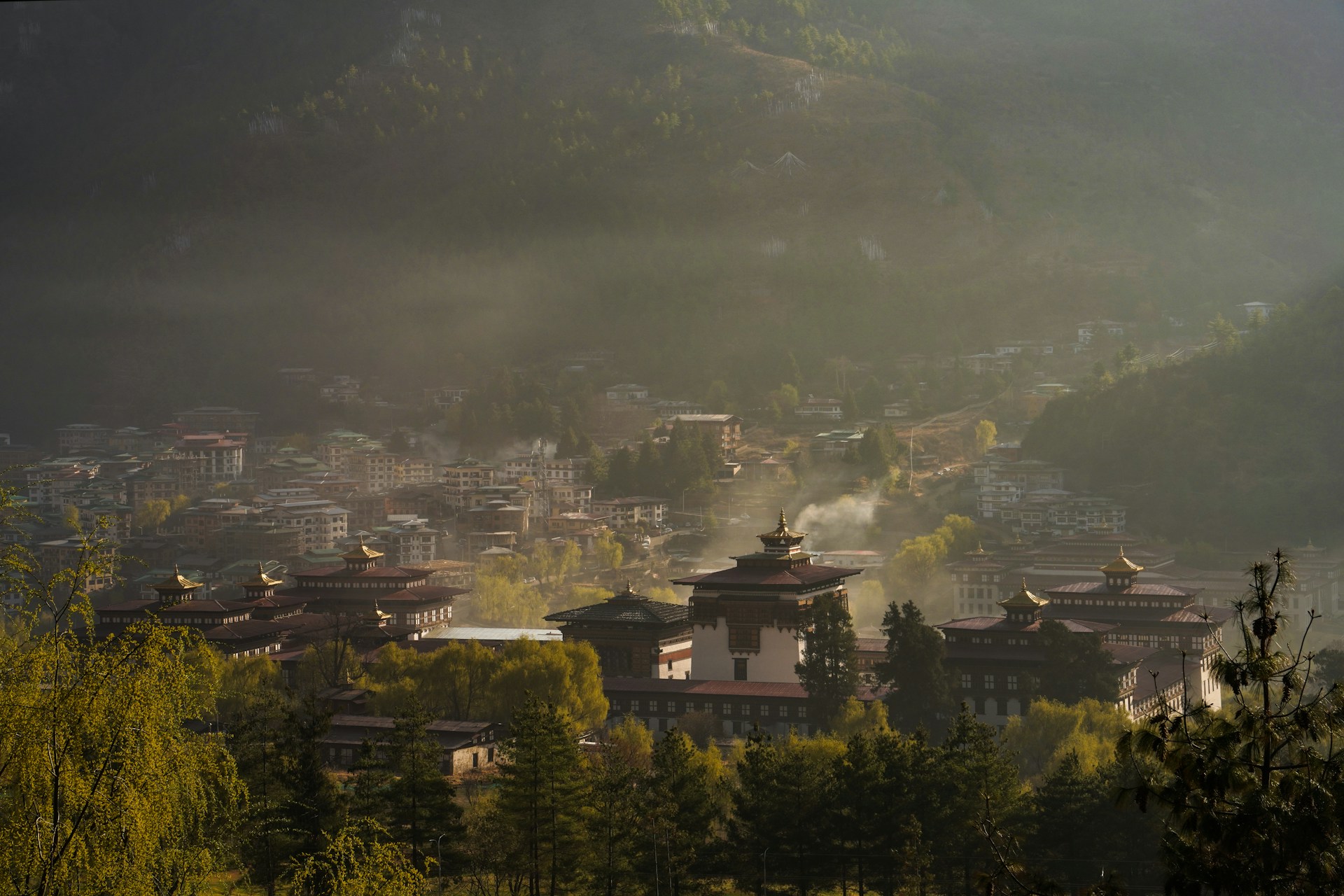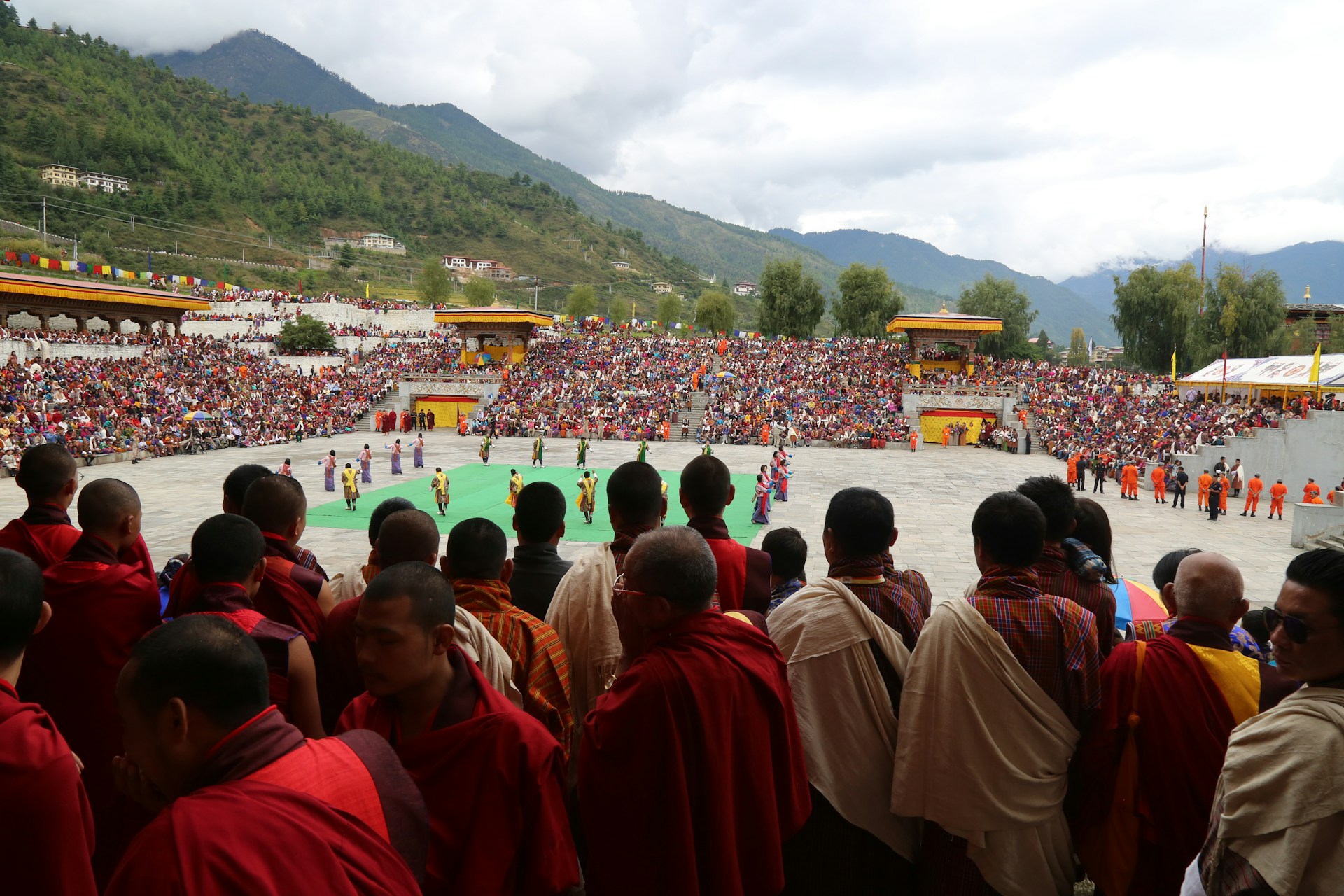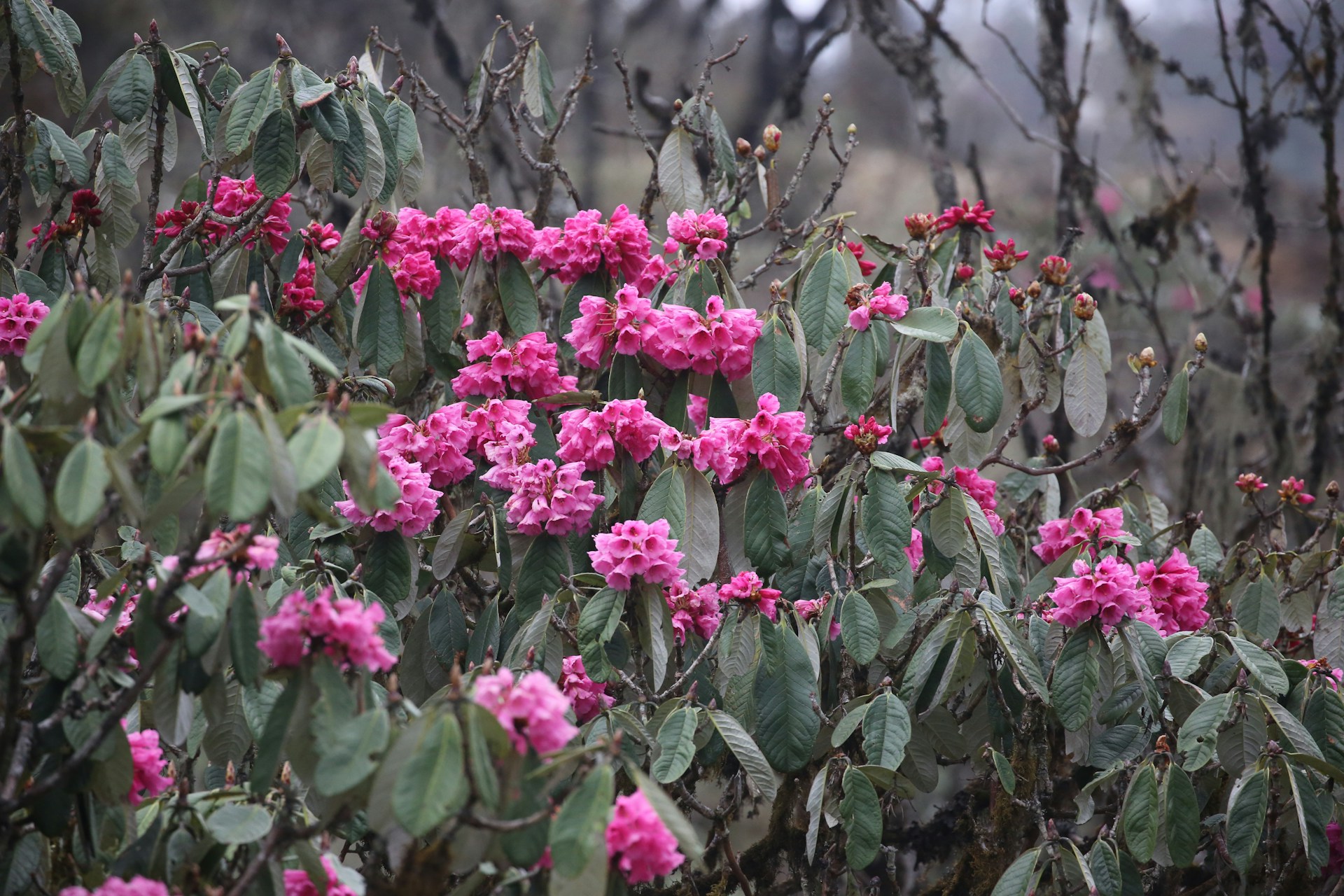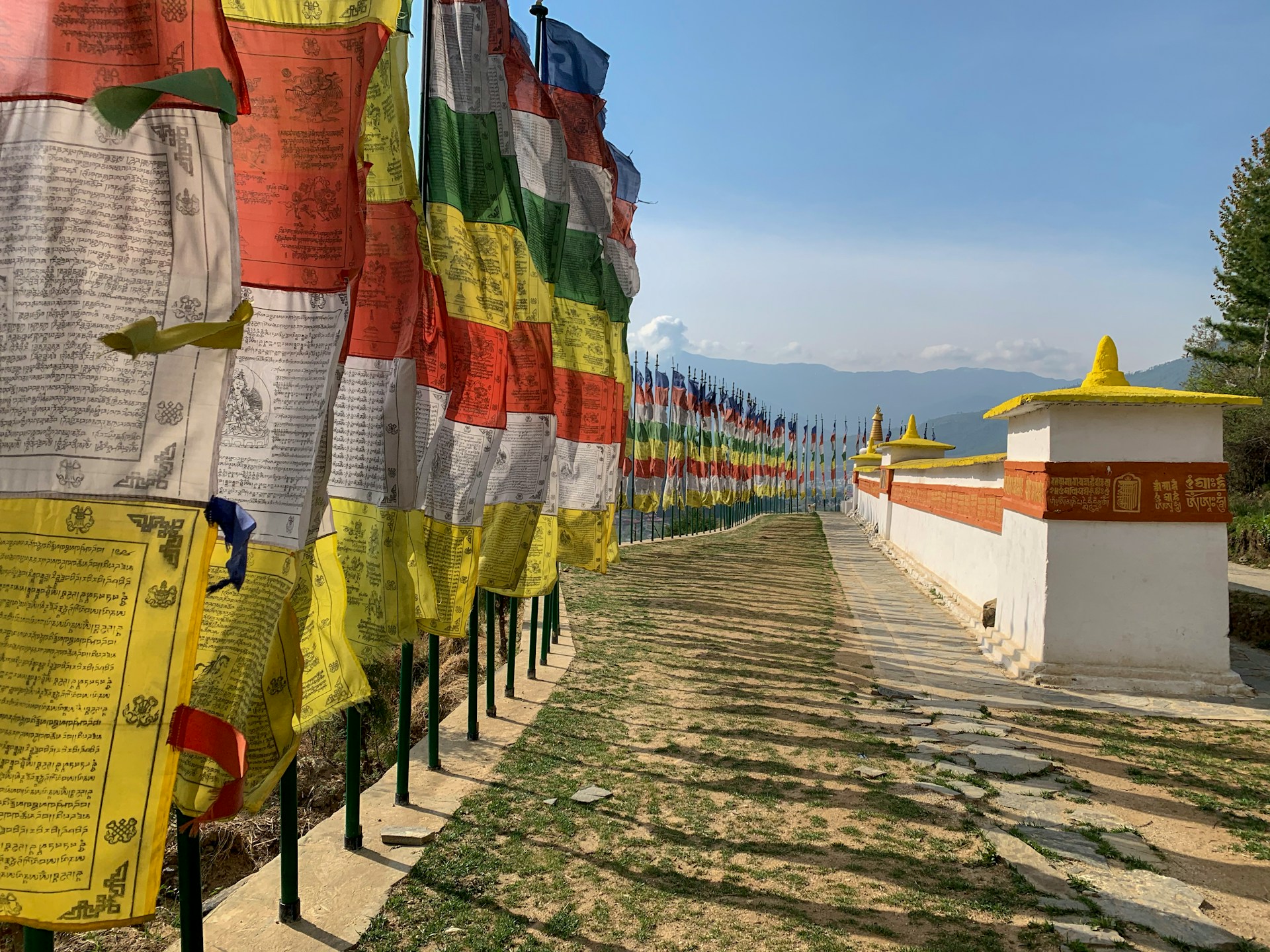Bhutan in Bloom-Colors, Culture and Calm
Eastern Himalayas, Bhutan is a country where nature blossoms, traditions flourish, and peace flows like mountain air. Often referred to as the "Land of the Thunder Dragon," Bhutan stands apart with its unique blend of vibrant festivals, serene landscapes, and deep-rooted spiritual values. The phrase “Bhutan in Bloom” captures more than just the floral beauty — it reflects the blossoming of culture, color, and calm in every corner of this peaceful kingdom.
From the moment travelers enter Bhutan, they are greeted by a burst of color — not just in the blooming rhododendrons or golden rice fields, but also in the intricately designed traditional clothing, colorful prayer flags fluttering in the wind, and the vivid mask dances performed during local festivals like Paro Tshechu or Thimphu Drubchen. Bhutan’s dzongs and monasteries, perched dramatically on cliffs or nestled in valleys, are adorned with detailed murals and architecture that echo centuries of spiritual heritage.
Beyond the colors lies a profound sense of culture and calm. Bhutan's philosophy of Gross National Happiness ensures that development is measured not just in economic terms, but also in well-being, harmony, and sustainability. Daily life here is steeped in Buddhist values, evident in the smiles of monks, the rhythmic chants echoing from temples, and the country’s dedication to preserving both environment and tradition.
Whether you’re hiking to Tiger’s Nest, wandering through Bumthang Valley, or sipping butter tea in a farmhouse in Haa, you’ll feel Bhutan not just as a destination, but as an experience — a place where the heart finds stillness.
Bhutan in Bloom is where color meets culture, and culture leads to calm — a rare harmony that few places on earth still preserve.
Bhutan in Bloom – A Symbol of Natural and Spiritual Awakening
-
Springtime Bursts of Wildflowers and Rhododendrons: As Bhutan enters spring, valleys and mountainsides come alive with blooming rhododendrons, primulas, and magnolias, painting the landscape in vibrant pinks, purples, whites, and reds — a stunning natural awakening after winter.
-
A Nation Rooted in Spiritual Growth: Bhutan's definition of “bloom” extends to the inner journey of its people. Guided by Buddhist values, the country encourages mindfulness, compassion, and personal growth — making Bhutan not just a blooming landscape, but a blooming spirit.
-
Festivals that Revive Culture and Community: Bhutanese Tshechus and sacred ceremonies are seasonal celebrations where culture blossoms. Through masked dances, music, and rituals, the community comes together to reconnect with its roots and rejoice in unity.
-
Youth Empowered Through Education and Heritage: Bhutan is blooming socially too — young Bhutanese are educated in both modern subjects and traditional values, ensuring cultural continuity while embracing new opportunities.
-
Eco-Conscious Development as a Model for Growth: Unlike rapid urbanization elsewhere, Bhutan’s growth is measured, sustainable, and respectful of nature. Environmental policies ensure that forests remain protected and cities bloom in harmony with the Earth.
-
Spiritual Sites That Cultivate Inner Peace: Places like Tiger’s Nest Monastery, Kurjey Lhakhang, and countless hermitages offer spaces where both monks and visitors can meditate and blossom spiritually amidst silence and sacred surroundings.
-
Gross National Happiness as a Blooming Philosophy: Bhutan’s unique development philosophy—Gross National Happiness—is itself a symbol of national blooming, focusing on well-being, harmony, and values, rather than material wealth.
The phrase "Bhutan in Bloom" goes beyond the literal image of flowers and springtime. It symbolizes the flourishing of Bhutan's natural beauty, cultural heritage, and peaceful way of life. Bhutan is a country where nature and tradition exist in perfect harmony. Whether it's the seasonal blooming of rhododendrons, the revival of ancient rituals, or the smiling faces of locals dressed in vibrant attire, Bhutan is truly a nation in continuous, gentle bloom. It is growing — not through industrial chaos — but through mindful preservation and meaningful progress.
Colors – A Vibrant Expression of Identity and Nature
-
Prayer Flags Flutter in Five Colors: All over Bhutan, you’ll see strings of colorful prayer flags—blue, white, red, green, and yellow—fluttering across mountain passes, bridges, and rooftops. Each color represents an element (sky, air, fire, water, and earth), symbolizing balance and harmony in both nature and life.
-
Traditional Dress Brightens Daily Life: Bhutanese people wear the Gho (for men) and Kira (for women) in vibrant colors and woven patterns. These garments not only preserve tradition but also reflect personal identity and regional craftsmanship.
-
Festivals Burst with Color and Movement: During Tshechus and other religious festivals, masked dancers wear multi-colored silk robes and elaborate masks. These sacred dances, performed in monasteries and dzongs, are meant to bless the audience, drive away evil, and preserve history through performance.
-
Dzongs and Temples Radiate Artistic Color: Bhutan’s ancient fortresses and monasteries, like Punakha Dzong and Tashichho Dzong, are painted with earth tones, floral designs, and vibrant religious murals. These colors carry spiritual meaning and reflect the country's devotion to Buddhist teachings.
-
Natural Landscapes Paint a Living Canvas: Every season brings its own palette—pink rhododendrons in spring, lush green valleys in summer, golden rice fields in autumn, and snowy whites in winter. Nature’s colors in Bhutan are alive and ever-changing, making the landscape feel like a moving painting.
-
Handicrafts Reflect Cultural Color: From woven textiles to painted wooden crafts, Bhutanese artisans use traditional dyes and patterns to produce vibrant souvenirs that preserve centuries of artistic heritage.
-
Even Food Adds Color to Culture: Bhutanese dishes, like Ema Datshi (chili cheese), feature bright red chilies, green vegetables, and colorful spices—creating meals that are both visually appealing and culturally rooted.
The colors of Bhutan are everywhere — in the fluttering prayer flags that line mountain passes, in the festive masks and costumes of Tshechu dancers, in the painted walls of ancient dzongs, and even in the terraced fields turning gold before harvest. These vibrant visuals reflect Bhutan’s rich spiritual symbolism and deep-rooted cultural identity. Nature also adds to this palette, with blooming wildflowers, lush green valleys, snow-covered peaks, and clear blue skies. Every color tells a story — of belief, celebration, and balance with nature.
Culture – Living Traditions and Sacred Heritage
-
Traditional Dress Worn with Pride Every Day: In Bhutan, cultural identity is visible daily as people wear the Gho (for men) and Kira (for women), preserving centuries-old clothing traditions and showcasing a deep respect for heritage.
-
Festivals as Living Expressions of Faith: Annual festivals like Paro Tshechu, Punakha Drubchen, and Jambay Lhakhang Drup bring sacred stories to life through masked dances (Cham), religious music, and ceremonial performances that pass down history through art.
-
Monasteries and Dzongs as Cultural Anchors: Bhutan's iconic fortresses and monasteries—like Tashichho Dzong, Punakha Dzong, and Kurjey Lhakhang—are more than monuments; they’re spiritual centers, administrative hubs, and guardians of Bhutanese culture.
-
Oral History and Legends Still Shared Today: Elders, monks, and local storytellers continue to pass down folktales, legends, and spiritual teachings, preserving Bhutan’s wisdom and worldview for younger generations.
-
Arts and Crafts Reflect National Identity: Bhutan’s 13 traditional arts (Zorig Chusum)—including wood carving, thangka painting, and weaving—are not just decorative skills but essential parts of daily life, economy, and identity.
-
Education Blends Modern and Cultural Values: Bhutanese schools integrate spiritual learning, culture, and environmental respect into their curriculum, ensuring students grow with both knowledge and national pride.
-
Buddhism Shapes Every Aspect of Life: Cultural practices in Bhutan are inseparable from Mahayana Buddhism, which influences architecture, rituals, values, and even policy—creating a society where culture and spirituality are intertwined.
-
Community and Kinship at the Core of Society: Bhutanese culture emphasizes family bonds, communal gatherings, and helping one another, fostering a sense of belonging and collective happiness rooted in tradition.
Bhutan’s culture is alive, not just preserved in museums but practiced daily. From Buddhist rituals in monasteries to traditional arts like thangka painting and archery, culture thrives in every valley and village. Bhutanese people take pride in their language, dress, festivals, and values, all of which are shaped by their devotion to Buddhist philosophy and their respect for the environment. This vibrant cultural presence is what makes Bhutan one of the last remaining authentic Himalayan kingdoms.
Calm – A National Identity Rooted in Peace
-
Gross National Happiness Over GDP: Bhutan is globally recognized for its unique development philosophy, Gross National Happiness (GNH), which prioritizes well-being, emotional balance, and environmental harmony over economic gain—fostering a national atmosphere of peace and contentment.
-
Monasteries as Sanctuaries of Stillness: Sacred sites like Tiger’s Nest, Cheri Monastery, and Gangtey Goenpa offer spaces where both locals and travelers can meditate, reflect, and reconnect with inner peace amid nature and silence.
-
Traffic-Free, Noise-Free Capital: Even in Thimphu, the capital city, there are no traffic lights, no loud horns, and minimal urban stress. This gentle rhythm reflects a deeper cultural value: peaceful coexistence over fast-paced progress.
-
Himalayan Landscapes That Soothe the Soul: From the serene Phobjikha Valley to the quiet forests of Haa, Bhutan’s natural surroundings are untouched, clean, and vast—providing an environment where peace is not just felt, but deeply lived.
-
Spiritual Practices in Daily Life: Bhutanese people engage in daily prayers, spinning prayer wheels, burning incense, and performing simple rituals that cultivate gratitude, mindfulness, and calmness throughout the day.
-
Slow Travel as a Way of Life: Tourism in Bhutan is built on a low-volume, high-value model, allowing guests to explore the country slowly and respectfully, without crowds or commercial overload—encouraging a deeper, more peaceful experience.
-
Respectful, Harmonious Society: Bhutanese society emphasizes mutual respect, humility, and harmony, creating an environment where people live peacefully with one another and with nature.
-
Calm Reflected in Architecture and Design: Whether it’s a quiet riverside dzong or a traditional farmstay in a remote village, Bhutanese architecture is designed to blend with nature, not overpower it—inviting a sense of calm in both form and function.
Perhaps what sets Bhutan apart most is its profound sense of calm. The country’s pace of life is slow and deliberate, its people grounded in spiritual practice and community values. Guided by the philosophy of Gross National Happiness, Bhutan places the mental, emotional, and spiritual well-being of its citizens above material wealth. This sense of inner peace is deeply felt by travelers. In Bhutan, calm isn’t just an emotion — it’s a way of life. Whether you're meditating in a mountaintop monastery or listening to prayer wheels spin, you'll find a rare silence that heals and inspires.

Bhutan’s essence lies not only in its famed monasteries or colorful festivals but also in the subtle harmony it maintains between nature, architecture, spirituality, and community life. As the seasons change, the country transforms—spring brings wildflowers and vibrant valleys, autumn dresses the fields in gold, and winter cloaks the mountains in peaceful white. This natural cycle reflects Bhutan’s timeless beauty in bloom. Even Bhutanese architecture embodies this harmony, with dzongs, farmhouses, and temples blending seamlessly into the surrounding hills. Life here flows with a quiet rhythm. Villages celebrate together, monks chant in solitude, and locals tend to their farms with deep-rooted contentment. The Bhutanese smile, calm and sincere, reflects an inner peace that’s hard to find elsewhere. Art, music, and sacred dance are not mere entertainment but spiritual expressions passed down for generations. Bhutan protects this serenity through its “High Value, Low Impact” tourism model, ensuring that visitors experience an unspoiled, meaningful journey. In Bhutan, everything blooms gently—landscapes, culture, people, and peace—offering travelers not just sights to see, but a state of being to feel and remember. It’s more than a destination; it’s a living, breathing expression of calm, color, and cultural grace.
FAQs
Q1: What does “Bhutan in Bloom” really mean?
A: “Bhutan in Bloom” symbolizes more than just flowers — it reflects the country's flourishing natural beauty, vibrant traditions, and peaceful spiritual lifestyle. It’s about how Bhutan is growing gently and gracefully through culture, conservation, and calmness.
Q2: When is the best time to experience Bhutan’s natural bloom?
A: The ideal time is spring (March to May), when rhododendrons, wildflowers, and lush green landscapes are at their peak. Autumn (September to November) is also beautiful, with clear skies, harvest colors, and festive celebrations.
Q3: Are Bhutan’s festivals open to tourists?
A: Yes, tourists are welcome to attend Bhutanese festivals such as Paro Tshechu or Thimphu Drubchen, where they can witness colorful mask dances, traditional music, and sacred rituals in a lively and respectful setting.
Q4: How does Bhutan preserve its culture and calm environment?
A: Bhutan follows the philosophy of Gross National Happiness, emphasizing cultural preservation, environmental protection, and balanced development. Traditional attire, sacred architecture, and spiritual rituals are all actively practiced.
Q5: Is Bhutan really as peaceful as it sounds?
A: Yes. Bhutan is known for its quiet valleys, no traffic lights in the capital, respectful social norms, and spiritual lifestyle. It offers one of the most tranquil travel experiences in the world.
Q6: What are some colorful elements of Bhutanese culture?
A: Bhutan is full of color—from prayer flags and festivals to traditional dress, temple murals, and local crafts. Nature also adds color through changing landscapes and blooming flowers.
Q7: Do I need a guide to explore Bhutan’s culture and monasteries?
A: Yes. All tourists must travel through a licensed Bhutanese tour operator. A certified guide will enhance your experience by sharing cultural insights, managing logistics, and ensuring respectful travel.
Q8: Can I experience spiritual activities as a visitor in Bhutan?
A: Absolutely. Visitors are encouraged to engage in meditation retreats, attend monastic prayers, or even light butter lamps in temples. Bhutan welcomes spiritual seekers with openness and authenticity.
Q9: Which places best represent Bhutan’s calm atmosphere?
A: Serene destinations like Phobjikha Valley, Bumthang, Haa Valley, and hilltop monasteries like Tiger’s Nest offer profound peace, scenic beauty, and spiritual calm—ideal for those seeking rest and reflection.
Q10: How long should I stay to enjoy Bhutan’s colors, culture, and calm?
A: A 7–12 day tour is ideal to visit major cultural hubs like Paro, Thimphu, Punakha, Bumthang, and Haa, while also soaking in nature, spirituality, and the slow rhythm of Bhutanese life.



